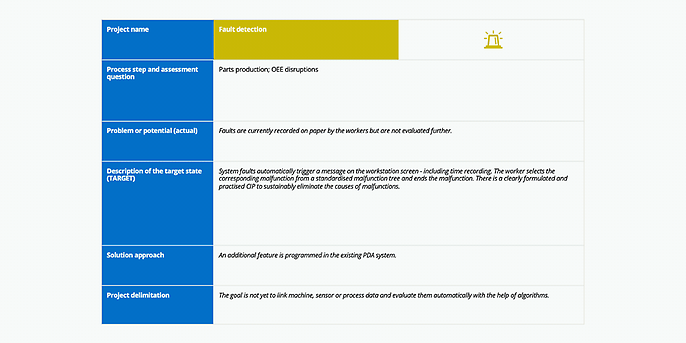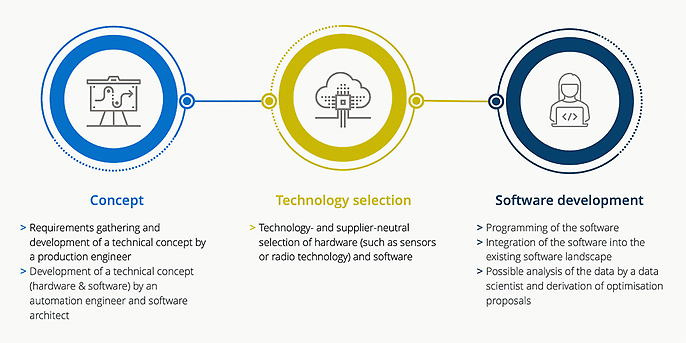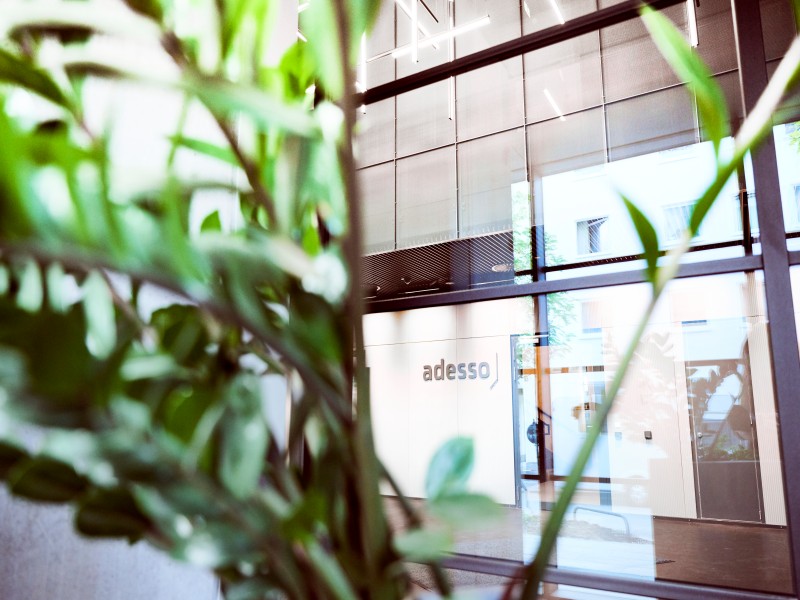28. March 2023 By Dr. Patrick Kübler
Digitalisation assessment for production
Digitalisation projects often face two problems: Either there is no real idea of what to start with at the very beginning, or those involved are generally looking for new ideas for digitalising production. These are often reasons for our customers to take a closer look at their production together with us. And we have the right tool for the job: our Digitalisation assessment, which we have developed especially for production.
Our experts analyse production along the material flow from incoming goods to outgoing goods and interview the company’s experts using a structured questionnaire. This enables us to quickly identify potentials with minimal effort, for which we then develop concrete digitalisation projects. We work with the company’s experts to both assess the projects and define a corresponding digitalisation roadmap.
What distinguishes the assessment from other tools?
Our production engineers, automation technicians and computer scientists all worked together to develop the assessment – because we are convinced that digitalisation can only succeed in production with an interdisciplinary team. This is also why we always have colleagues from the above-mentioned professions carry out the work at the client’s premises. In this way, it can be ensured that projects that have a concrete benefit for production and are technically and economically feasible at the same time are developed from the very beginning. Our years of experience from numerous successfully completed digitalisation projects also help us with this.
What does a production assessment look like?
We conduct the assessment in four steps:
1. Maturity assessment
In order to work out which digitalisation projects are viable, the following questions must be answered at the very start:
Where is production done?
Although the focus here is primarily on the shop floor, adjacent areas – such as production planning and production control or maintenance and the IT system landscape in production – are also considered.
What needs to happen with production?
What specific goals should be achieved with the digitalisation projects, and what adjustments still need to be made?
Structured individual interviews are essential to answering these questions and determining the degree to which production has matured in terms of digitalisation. To this end, we use a catalogue containing 130 specific questions that give us a precise overview of the ACTUAL state of production. Abstract formulations such as ‘transparency must be increased’ do not help, which is why we ask questions such as this one:

In order to work out in which areas projects are viable, we record not only the ACTUAL state but also the TARGET state. We compare the obtained results – anonymised of course – with those we have acquired from other companies.
In the next steps, the focus will be on the areas where the ACTUAL state deviates from the TARGET state the most.
2. Project outlines
Once we have determined the ACTUAL and TARGET state, the project as such becomes the focus. We work with the company’s experts to develop project ideas and roughly record them in project profiles. For example, a profile for the above-mentioned question ‘How is disruption reduced?’ might look like this

We also describe the (technical) solution in such profiles in addition to the potential and the TARGET state. In this stage, it is also important to note what the project is not intended to achieve. This is how we ensure early on that everyone involved has the same understanding of the project.
3. Qualitative project assessment
No one undertakes a digitalisation project for the sake of digitalisation. Projects in production must have a measurable effect on costs, time or quality and be in reasonable proportion to the amount of effort required. However, since there is often a risk of ‘killing’ projects at a very early stage and thus never getting to the ‘doing’ stage, we qualitatively assess a project’s benefit and effort in the course of the assessment. Our clients usually only carry out the quantitative cost-benefit calculation after the assessment, when the roadmap is ready and the projects are worked out in more detail. At the end of this stage, the projects are clearly categorised in a matrix:
4. Digitalisation roadmap
In this step, we use the project outlines and the qualitative project assessment to develop the digitalisation roadmap. This roadmap lays out a plan for the projects in terms of time and capacity and answers the key question that often causes the implementation of digitalisation projects to fail: Who does what, when?

Why do we not just do the assessment ourselves? We know how our production works.
It goes without saying that companies are usually the ones who are most familiar with how their production works. Often, however, there is not enough time to get to grips with new technologies or to take a look at another company’s production. Both are valuable sources of new ideas. Our experts have access to both. And who is not familiar with the fact that sometimes you cannot get any further because no consensus can be reached across departmental boundaries, and so implementation is delayed more and more. This is where it helps to have a neutral outside perspective!
In order not to lose too much time, we tap into in the expertise of the company’s own employees and integrate them into the project. Not only does a team of external and internal employees – which from the start, is ideally composed of production and IT experts who are familiar with both the company’s situation and the possible solutions – bring an open view from the outside, such a team also brings the necessary outside inspiration to not only initiate digitalisation, but also to plan and implement it in such a way that it can make a lasting impact.

How we implement digitisation projects in production
This view from outside – the external team – is what we at adesso would be happy to be for you. And of course, we not only conduct the assessment together with you, but we also assist you in the digitalisation projects that we have developed.
You can find an overview of how we approach projects on our website.
Would you like to learn more about exciting topics from the world of adesso? Then check out our latest blog posts.

